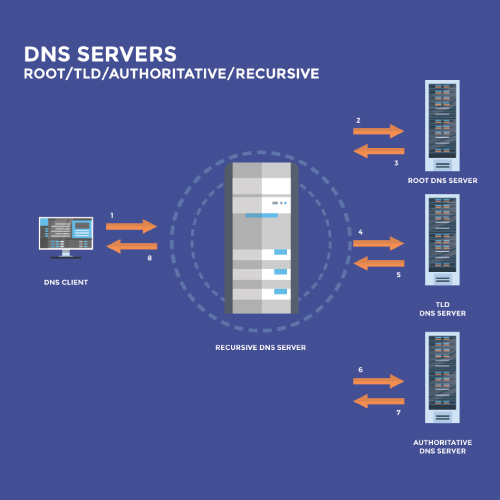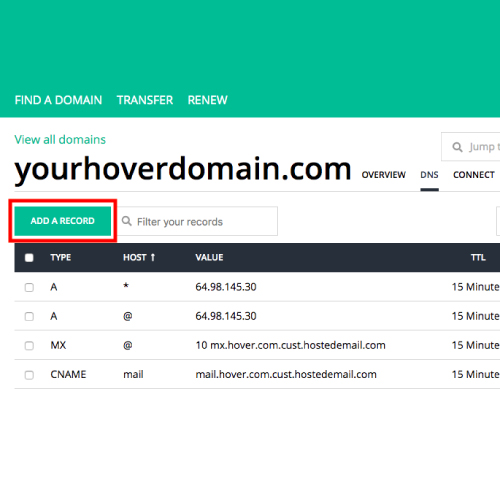Logout
Are you sure want to logout?
Yes
No

Full Name
Enter full name
Contact Number
Enter contact number
Enter valid contact number
Email Address
Enter email address
Enter valid email address

24 Feb 2022

24 Feb 2022
The DNS is known as Domain Name System, which acts as an integral part of the internet, that provides a way to map names and numbers. It is associated with anything associated with the internet, such as Laptops, tablets, mobiles, websites which has an IP address. It enables humans to use memorable domain names by mapping it with IP addresses.
Domain Name System plays a crucial role in marking its presence on the internet. For creating a website, it is important to have a domain name for it. Registrars provide the names, and we just need to go to their websites to purchase one. All the names registrars are accredited by a non-profit organization, responsible for managing domain names worldwide, i.e. ICANN - Internet Corporation for Assigned Names and Numbers. Resolving DNS is a one-step process, and it goes through several different phases.
If we visit a website for seeking some information, then we type its domain name and search it in the browser. After this, it suddenly starts resolving the hostname, and the PC will explore the IP address associated with the name in its local cache.
It shows its attribute in storing the information that our computer has saved recently. The website is displayed when it is present locally, but when the system does not consist the information, then it retrieves the correct information by performing a query.
One can also send the query to another server, whenever the information gets missed. Here the recursive DNS servers have their local cache, that stores the information, and these are mostly used because there is a possibility of the presence of a common name in the cache. Later on, the website gets displayed to the users.
Whenever the recursive DNS servers do not consist of the information that is stored in the cache memory, then it has to look elsewhere. The query associates the chain of authoritative servers and continues the search until it finds the server name for the domain. This marks their importance in being responsible that stores these records for the names.
In order to find the IP address, one goes for the query for the authoritative name server for the address record. Here, the Recursive server accesses the A record, from the authoritative name servers, and ultimately stores the data in its local cache system.
Recursive DNS stores the information and also returns the A record to the computer. The computer shows its importance in storing the data in the local cache. It takes the IP address from the data and moves it forward to the browser, which will connect it to the webserver that is associated with the A records IP and display the website.

It is also known as the DNS request. It means that the user sends a request to ask for the IP address to a server, which means that the client is asking a query to the server to get the IP address that is related to that domain.
It is considered as a query in which the server answers the users, and in the recursive query scenario, the server asks the queries to the other one. It marks its attribute in performing complete translation, and the user directly gets the IP address.
This category includes repeatedly requesting to different servers for resolution. It is considered as the query which is a request for the website. DNS server responds to the IP address. Later the request is forwarded to another server if the first one does not have the requested IP address.
It acts as a query in which the resolver comes in the form of an expert which already knows the answers, which either returns to the data. It gives immediate response to the users from the authoritative records that are maintained, which comes with ease.

It shows its attribute in converting the domain names into IP addresses, and also takes requests from the human and ultimately converts it into machine IP addresses, which makes the way easier and provides easy access to the origin server.
It is also known as the recursive resolver, which converts the hostname to the IP address. And the server is given importance to receive queries from the web browsers and the other applications as well. It is responsible to track the IP address for the hostname.
These are the servers that are operated in the stored data of queries, which answers the queries and provides the solution to it, and also uses 13 servers.
As the name indicates, it acts at the authority and has a higher level in DNS.
The server is the authoritative, the authoritative name is given to the specific hostname because it holds the up-to-date information about that hostname.

It has been created with a DNS record to provide important information regarding the hostname and its current IP address. It consists of some common record types that include:
It is known as A record, which is a host of records. It stores a hostname and its corresponding IP address, which means to provide the IP address associated with the domain name.
It is the second type of record and is also called as AAAA record, that stores the information of hostname along with the IP address related to version 6.
It is sorted as the CNAME, that marks maps one domain name to another.
It is also known as the MX record. It represents the mail server that is responsible for accepting and emailing messages.
It is shortened as an NS Record in which the record is present at the top, and is made public.
It is also known as a PTR record, which provides a name that consists of an IP address, and is used in the lookup of DNS.
It is shortened as CERT Record, which stores the encrypted certificates and ultimately provides information to the authentic recipients only.
It records and stores the data about the location in the server of the name. It is a resource record that is used to locate domain controllers for the active directory.
As the name indicates, it contains text information for sources that are outside the domain. Along with this, it also carries machine-readable data such as encryption, sender policy, etc.
It consists of information about zone files, domain serial number, and especially regarding zone transfer, its format is specified in RFC 1035.
It is crucial as it acts as the backbone of the internet. Whenever we explore any particular website, we do not need to always remember and enter the long-form of IP address.
We simply need to enter the domain name and we reach the place where we want to go. If the DNS is not able to translate the domain name to the correct IP address, then we would not be able to translate the domain name to the correct IP address, and ultimately not be able to access any of the websites. Hence, the Domain Name System plays a crucial role on the website.
[The images are being taken from the registered companies and belong to their respective owners only.]

Submit Design
Height and Width should be the same (e.g. 1000 x 1000)
Supported file formats : .JPG / .JEPG / .PNG